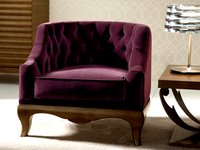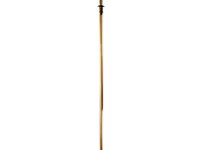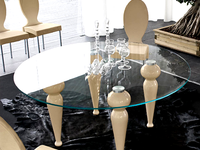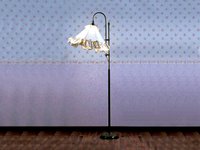The Capodimonte porcelain factory was founded by the Bourbon King Charles
of Naples in 1743. When he conquered the Kingdom of Naples and Sicily,
overcoming the opposition of the Austrians, he brought to Naples his advisers,
his artists and even his art collections inherited from his mother, Elisabetta, the
last of the Farnese ducal family. And he straightaway built the Capodimonte
Palace to house the collection. One of his various artistic projects was the famous
porcelain factory. He had become interested in porcelain after marrying Maria
Amalia Walburg of Saxony in 1738, the granddaughter of Augustus (II)
The Strong of Saxony, who in 1710 had founded Europeís first porcelain factory,
Meissen. The bride’s dowry in fact included numerous cases containing porcelain
dinner and tea services, and this was what first kindled Charles’ interest in
producing his own porcelain. The first experiments in making porcelain began
in the courtyards of the royal palace at Capo di Monte above Naples in 1740
with the aid of Vittorio Schepers, who, after a number of attempts, finally came
up with a unique, wonderfully workable soft-paste for the porcelain. Many of
the enamel paints used were ordered direct from Venice and Dresden. By 1743,
the results were so good that King Charles ordered the architect Ferdinando
Sanfelice to design a special building for the factory in the Capodimonte park.
Well-known artists and painters arrived from far and wide. In the new building,
workers and artists lived - and argued and schemed - like hermits in a small
hard-working monastic community, under the auspices of the accountant Aniello
Andrea Carolla. In the month of December alone, the kilns of Capodimonte
produced 1970 unbroken pieces: snuff-boxes, goblets, teapots, cups, walking-
stick handles and saucers. King Charles’ assistants took their inspiration from
the famous Meissen, Ginori and Venezia companies. Between 1743 and 1745
the chief modeller Giuseppe Gricc created a series of figurines from the Italian
tradition of Commedia dell’Arte (popular theatre), including the characters of
Punch, Pantaloon, Columbine and Harlequin seen playing cards or sitting at a
plate of spaghetti. Other figurines represented religious or mythological subjects,
musicians, singers, peasants and fishermen. These first pieces were neither in
the Rococo style, nor in what we now refer to as the Capodimonte style. The
Capodimonte mark at the time was a light-blue or gold Bourbon lily. In the
figurines, the mark is generally set into the paste, inside a circle. Year by year,
the company grew, hiring new artists, increasing output, adding new shapes
and decorations, enriching the collection with important pieces. In 1745, the
first shop was opened in Naples. Production had reached extremely high levels
of artistry and craftsmanship. There were around 58 employees working in the
factory, and every important or influential artist tended to bring along with
them their children, relatives and their offspring, setting them up in various
departments, taking them on as their apprentices and successors. To his great
disappointment, King Charles had to depart from Naples in 1759 to become
King of Spain, leaving his Neapolitan kingdom to his young son Ferdinand and
a guardianship council appointed by the Prime Minister Tanucci. Following
King Charles’ retinue to Spain were three ships laden with his beloved porcelain
company (artists, workers, machinery, equipment and almost 5 tonnes of clay).
A good number of the artists left for Spain, but many remained in Naples.
Before leaving, however, King Charles had everything demolished or destroyed
H I S T O R Y o f c a p o d i m o n t e
Esce dallo stampo in
parti diverse.
The object comes out from the
mold in different pieces.
Fase di ritocco, l’oggetto viene
rifinito dai maestri artigiani.
Touch up stage, the master
craftsmen put the finishing
touches a to the object.
Le parti vengono unite rifinite
e ritoccate fino ad ottenere la
figura completa.
The pieces are joined, finished
and retouched to obtain the
complete picture.
308







